
Naomi O. Miroglio
FAIA, Assoc. DBIA
Principal
A hundred years ago, a tiny vaudeville theater built in 1911 on Mission Street in San Francisco started morphing into a 3,000-seat motion picture house with the contributions of two of San Francisco’s most significant architects, the Reid Brothers and Timothy Pflueger. After a long period of abandonment and decay, this rare gem—one of the city’s few remaining early-1900s movie palaces—has recently found new life as a dine-in movie theater with five screens; but it was a long and rocky road to bring this to fruition. As always with these movie palaces, finding a viable contemporary use while preserving their historic beauty and features is a tricky balance.
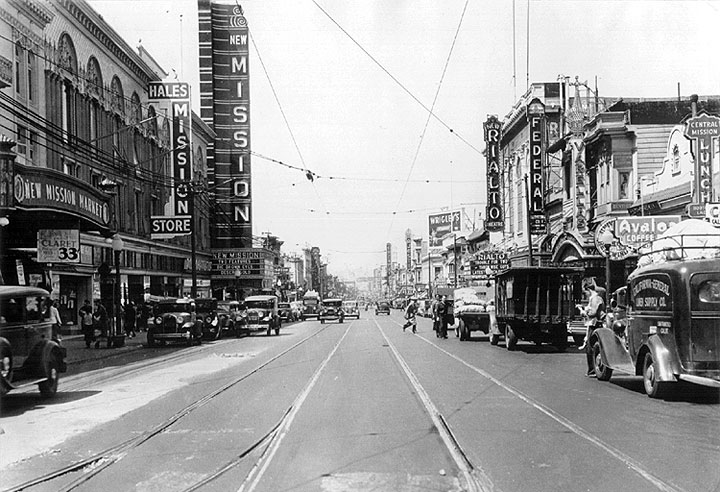

In 1916, the Reid Brothers, already well-known in the city for such landmarks as the Call Building, the Fairmont Hotel, and the Cliff House, repurposed the vaudeville theater at 2550 Mission Street as the lobby for a new, larger theater. Later, they added two balconies to the theater, creating space for more patrons. In the 1920s, Timothy Pflueger designed the outer lobby, marquee, and the 70-foot-high pylon blade sign, which stands today, in the fashionable Art Deco style of the times.
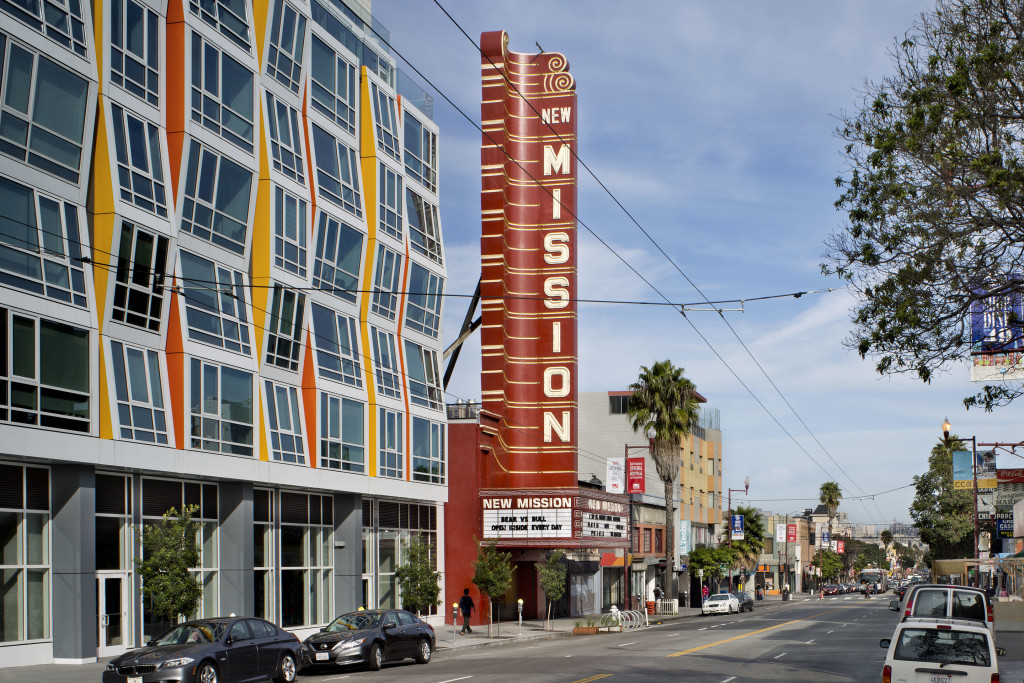
In 1993, the theater showed its last film, and the building became a furniture store before being abandoned. In 1998, City College of San Francisco purchased it with the intention of creating a new campus. But to make the project pencil out while still meeting the college’s educational needs meant demolishing most of the building. San Francisco Architectural Heritage nominated the theater for inclusion on the National Register of Historic Places, and local preservationists and activists lobbied vocally for the college to find a way to make adaptive use work. In 2003, the college sold the property, along with an adjacent Giant Value dollar store, to a developer who planned to restore the theater as a nightclub/restaurant and also build housing.

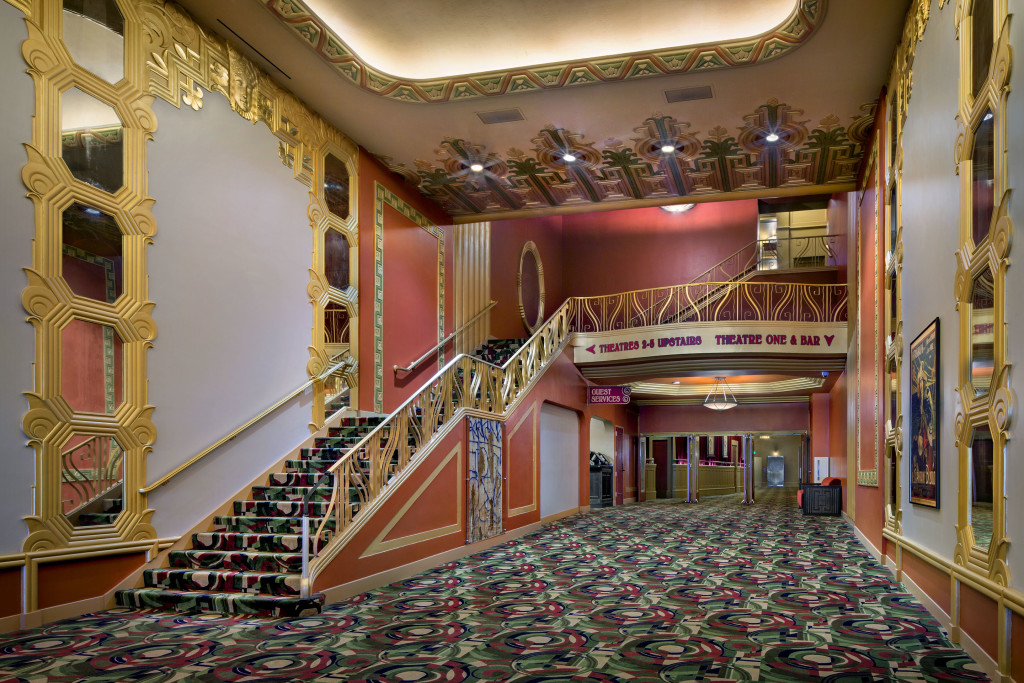
Sadly, the recession stalled the project, however, eight years later, the developer sold the Giant Value to a housing developer and the New Mission Theater to Alamo Drafthouse Cinema, a national chain specializing in dine-in movie theaters. Alamo started out in 1997 in Austin, Texas, as a second-run movie theater in a former parking garage. It became known for its food and drinks, and the company expanded throughout Texas and into Virginia, New York, Missouri, and Colorado.
During the theater’s period of vacancy, it was an occasional site for raves and squatters alike. By the time Alamo had purchased it, graffiti, pigeons, and water infiltration had left their mark. As an unreinforced masonry building, the cinema house needed work to remain safe in the event of an earthquake. 3D scanning was used to assess the water damage to the plaster walls and steel beams were inserted with shotcrete to seismically retrofit them. There was a massive amount of graffiti to remove, saving and restoring what we could. The original carpet and light fixtures were recreated using old photographs. The original blade sign now has new green neon lights. The original murals that decorated the lobby had been painted over, and although we were able to rescue some of these original works of art, many of them suffered from extensive water damage, making them unsalvageable.
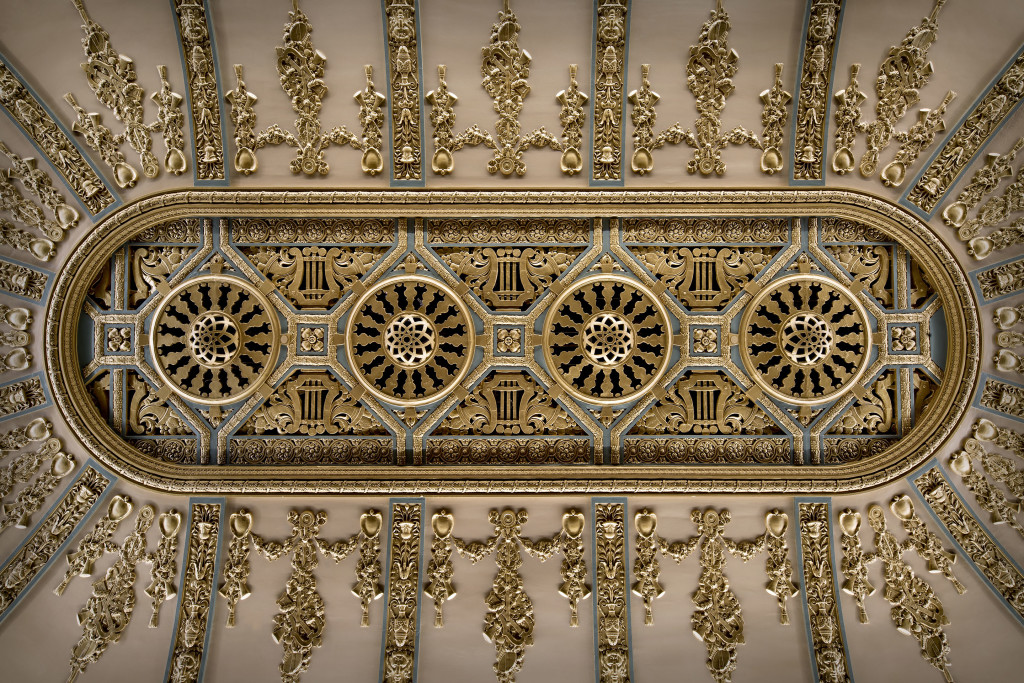
Working with Alamo’s frequent collaborator, the architecture firm Hodges and Associates, we restored the New Mission Theater’s lobby, marquee, balustrade, and auditorium interior, including the proscenium arch and stage, the main coffered ceiling, most of the plaster wall and ceiling ornamentation, and the entrance doors. A new basement beneath the auditorium houses a restaurant kitchen and associated support facilities. The ground level contains a 320-seat theater with table service, a kitchen, and a bar. The balconies contain four smaller theaters.
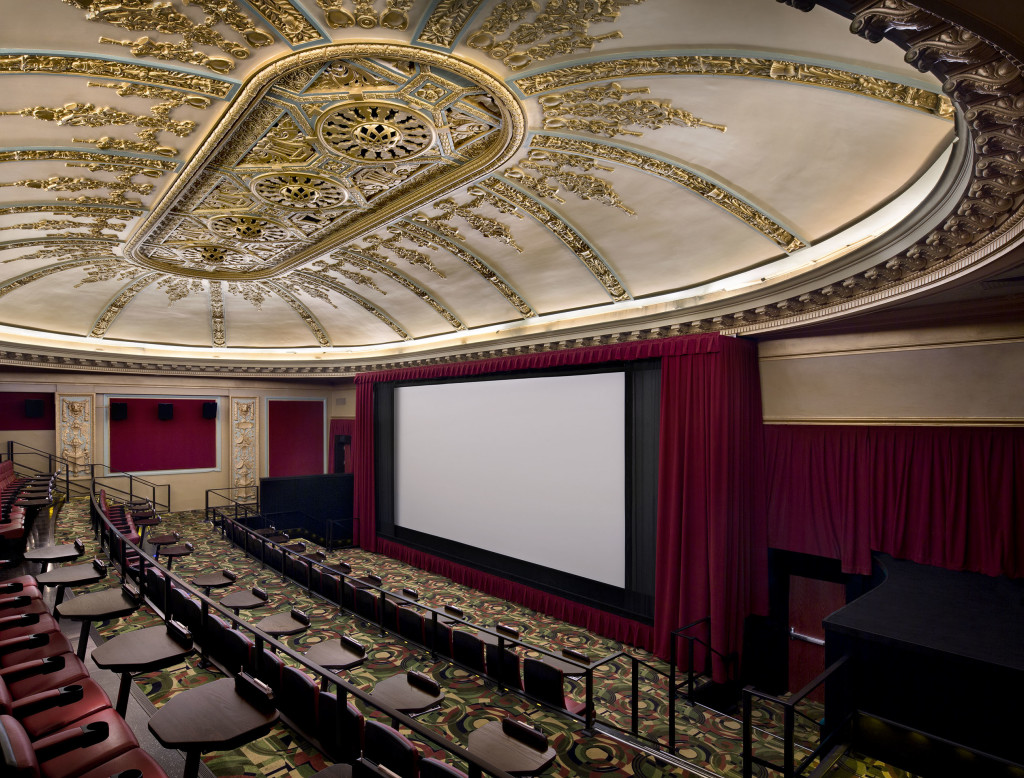
Alamo Drafthouse is known for their amazing programming and lived up to their reputation for the New Mission Theater’s grand opening. In October 2015, New Mission Theater opened its doors, welcoming patrons in to view the newest Star Wars movie, The Force Awakens. Today the theater features Hollywood’s latest blockbusters, but they also continue to show cult movies, like a Filipino takeoff of the 1966 Batman TV series, or a futuristic disco musical/religious allegory. New Mission Theater also hosts special events like “girls’ night out” showing films like Bridesmaids and admission includes a flute of champagne. For musicians and film lovers alike, the theater also puts a revived spin on silent films such as Buster Keatman and Clyde Bruckman’s, The General, with the accompaniment of live music . This year, The New Mission Theater will be one of the hosts to the San Francisco International Film Festival.
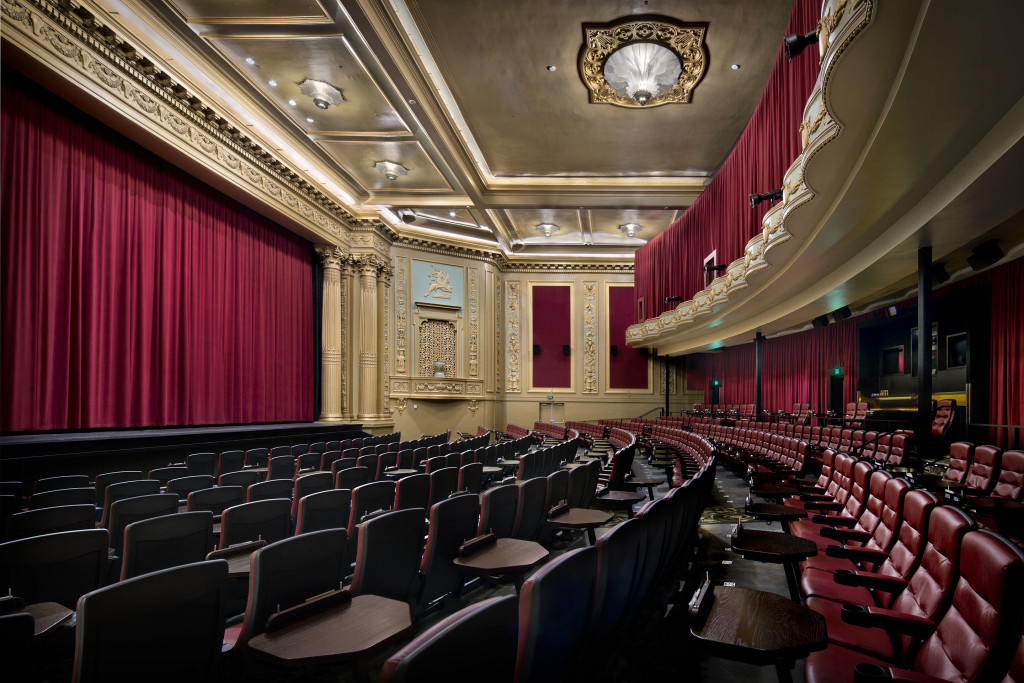
At any Alamo Drafthouse, you can order food and drinks both before and during the movie. Even as Julie Andrews belts out “Do Re Mi” on screen, you can fill out a menu card at your seat with the help of a small light, placing it into a stand where wait staff silently retrieves it, returning with your order, say, a shrimp hoagie or a beet (yes, beet) Reuben to munch on.
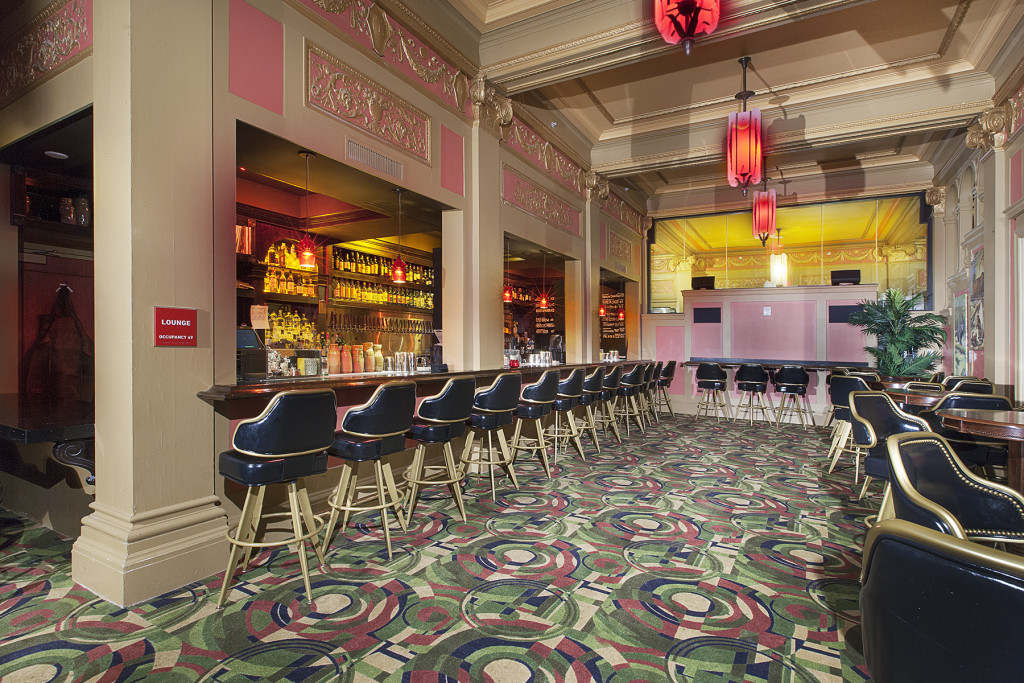
Development in the Mission District is often a real challenge, because of concerns about gentrification. It’s a testament to the appeal of Alamo Drafthouse’s program that there were no objections to the project. It’s a place for the community to gather—you don’t have to buy a movie ticket or order food to hang out at the lobby bar. In the future, a video rental store is planned for the mezzanine. It’s a creative business model that’s enabled the century-old movie palace to come back from the dead.
